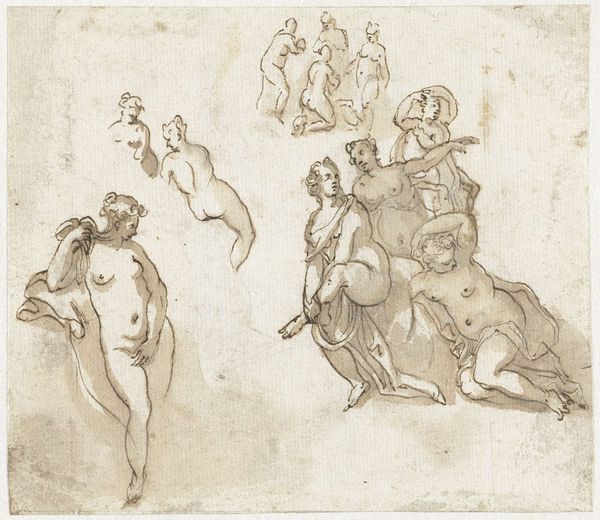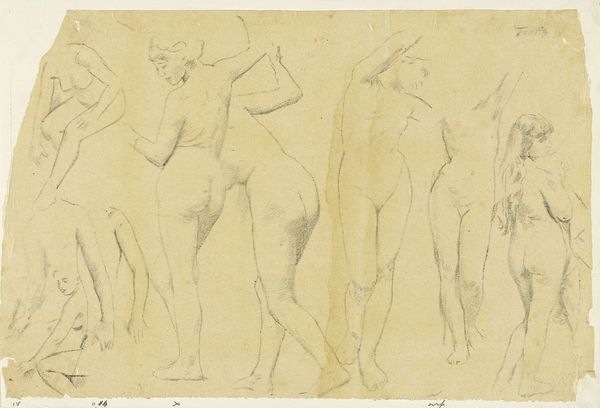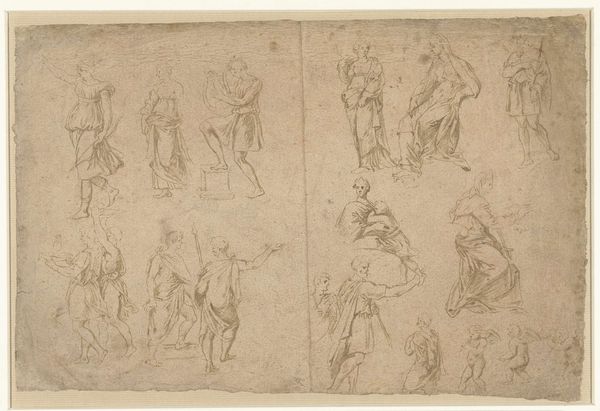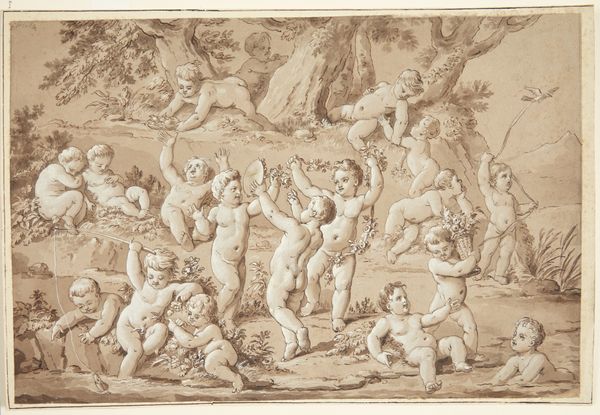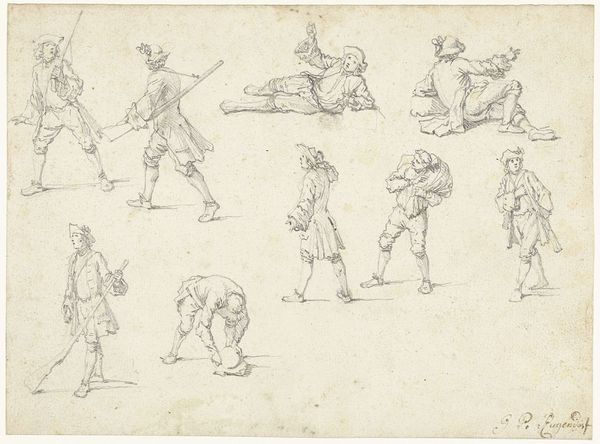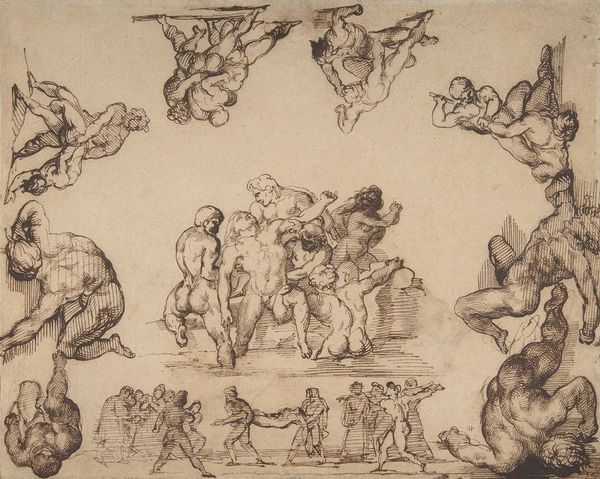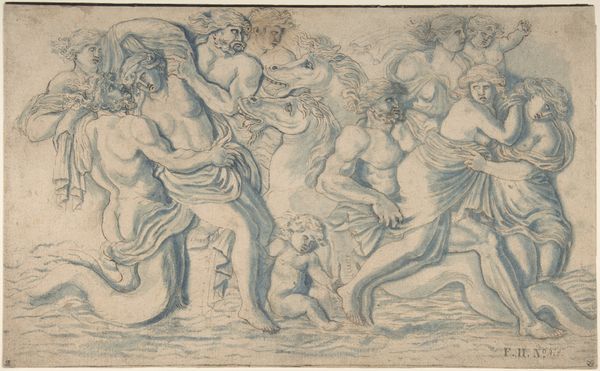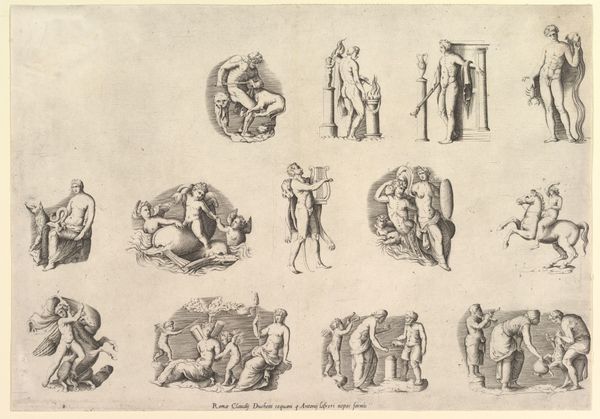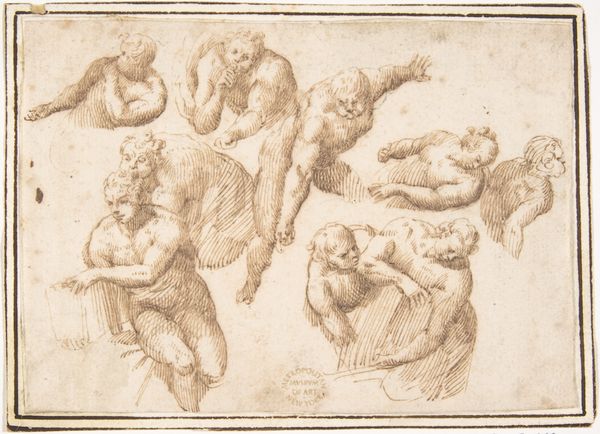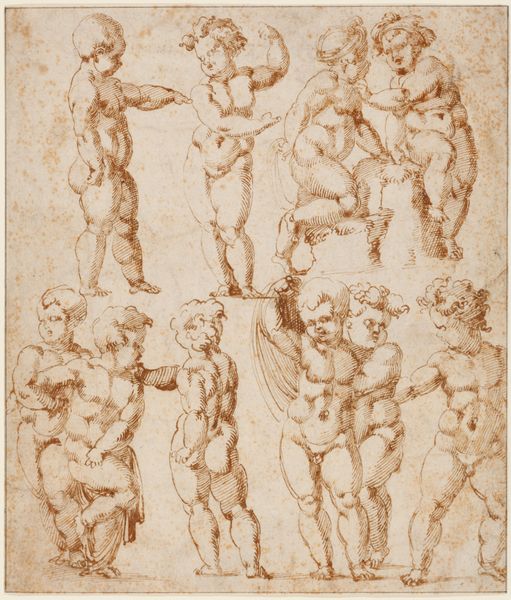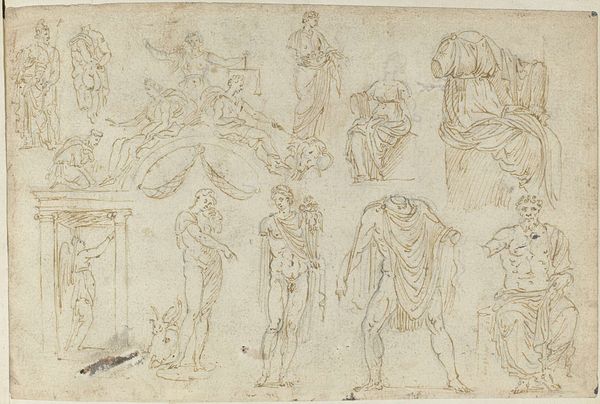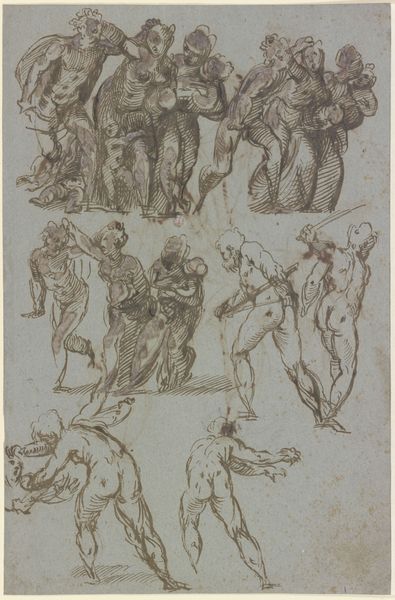
drawing, ink, pen
#
drawing
#
figuration
#
11_renaissance
#
ink
#
pen
#
miniature
Dimensions: height 195 mm, width 277 mm
Copyright: Rijks Museum: Open Domain
Curator: Let's discuss this fascinating study sheet featuring ten cherubic figures, rendered in pen and ink. The Rijksmuseum attributes this drawing, titled "Studieblad met tien engeltjes met attributen," to an anonymous artist from around 1642. What's your initial impression? Editor: The lightness of touch is what strikes me first. Each angel, or putto, seems to float on the page, and the delicacy of the pen work brings a tangible softness to these classical motifs. Curator: It's tempting to frame this study within a specific cultural context, perhaps investigating the function of these cherubs within, say, the religious and social constructs of the 17th century. Were they tools of piety? Representations of idealized innocence? And how might ideas about childhood have influenced their depiction? Editor: Precisely. Let's delve deeper into the production of such images. Considering the accessibility of materials – the paper, the ink, the pen – we see how reproductive drawings like this circulated visual ideas. How would you account for their wide dispersal, potentially impacting workshops, studios and the artists and craftspeople in training? Curator: And we must also interrogate what these cherubs communicated to the public and, particularly, whether their representations perpetuated specific narratives related to gender roles, sexuality, and power dynamics. Are we simply romanticizing the idea of innocence in this drawing? Editor: An excellent question. To add, what about their commercial value? Were these images specifically commissioned? How did such images fit into broader economic practices connected to religious and state propaganda during this time? Did they democratize artistic creation in any small measure or not? Curator: I would also underscore the need to see how they can inform ideas regarding intersectional historical understanding that might complicate their visual presence, perhaps revealing a certain level of cultural aspiration embedded within seemingly universal, but always historically conditioned images of cherubs. Editor: I completely agree; the historical understanding shifts when considering materiality. A focus on labor processes unveils hierarchies, divisions, and the lived reality of artistry during the time of production. Ultimately, the angel comes alive when considered as the product of social and economic exchange, not solely ethereal symbolism. Curator: It’s an intersection of socio-historical interpretations, yes. Viewing these figures through multiple theoretical lenses enhances our understanding of this seemingly simple drawing. Editor: Absolutely. This detailed material analysis combined with the intersectional lenses provides the best possible critical dialogue on this unique object.
Comments
No comments
Be the first to comment and join the conversation on the ultimate creative platform.
